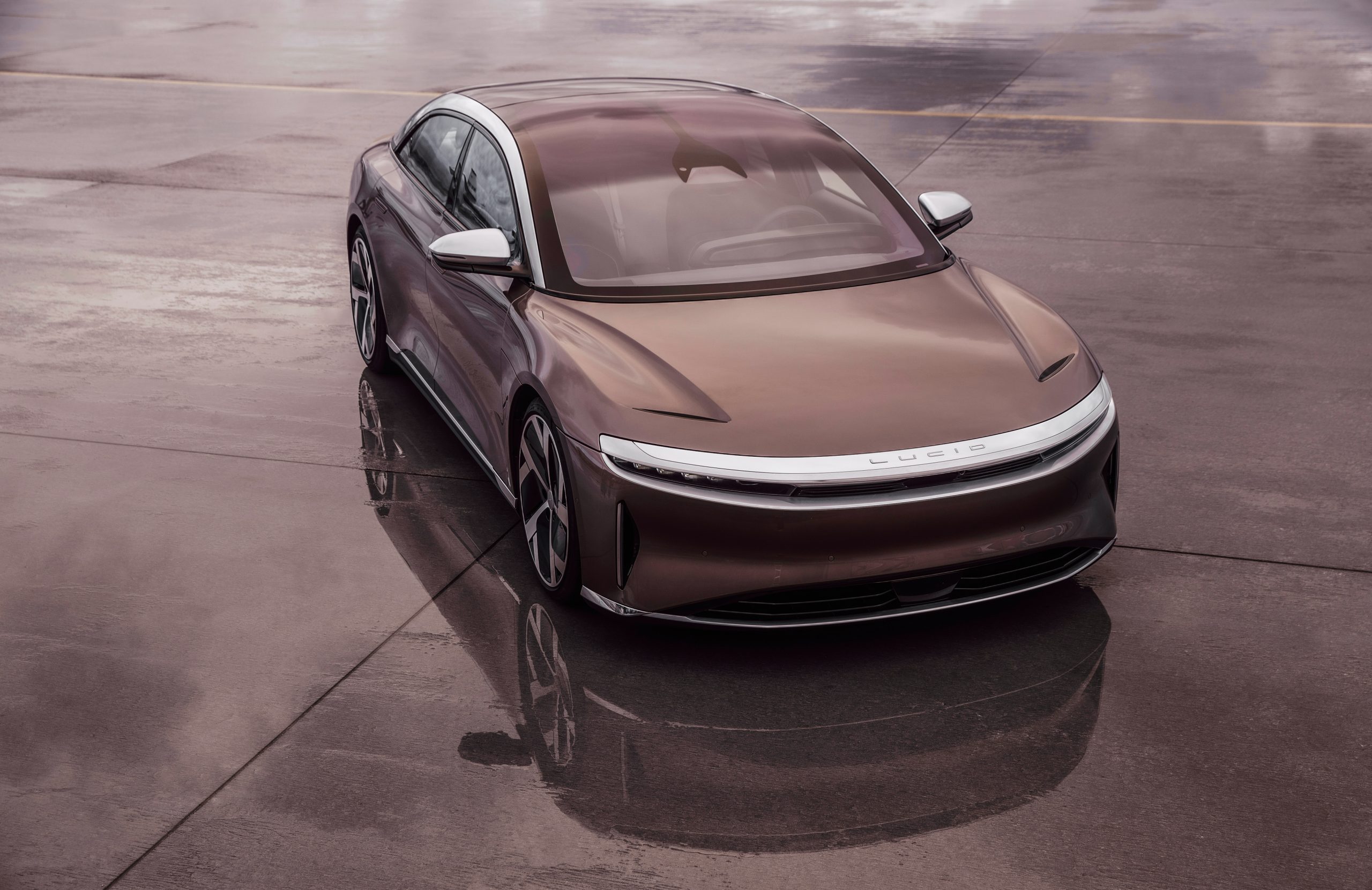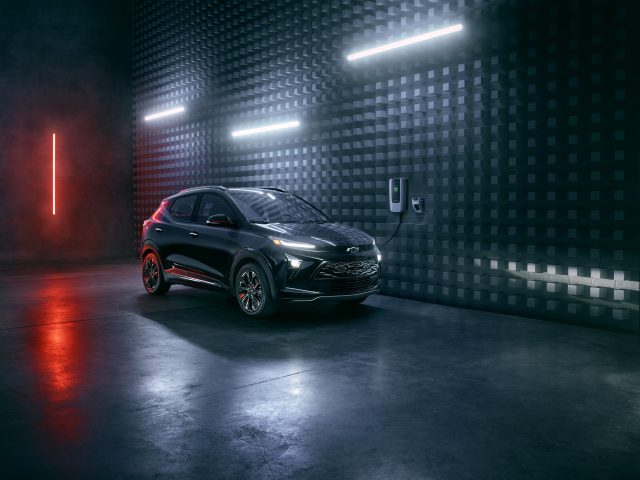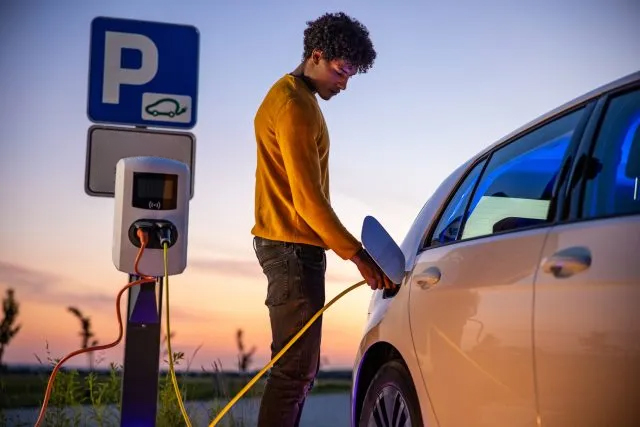A recent AAA survey of electric vehicle owners found that nearly all (96%) would buy or lease another the next time they were in the market for a new car. And word has spread: Sales of EVs through the first five months of 2021 grew 150% compared to the same period last year. Even President Joe Biden voiced his support of the green technology by setting a national goal for EVs to make up half of all new vehicle sales by 2030.
Certainly, there could be no better seals of approval. Yet while buying electric cars has grown exponentially over the years, it still lags far behind that of traditional gas-powered cars. As of 2020, there were nearly 1.8 million EVs registered in the U.S., according to the Pew Research Center, three times as many as in 2016. That may seem like an impressive growth until you compare it to the 280 million cars in operation across the country. Indeed, EVs represented just 2% of the new cars purchased in the U.S. in 2020.
“Although 40 million Americans have shown interest in buying electric for their next car, actual adoption is happening at a much slower rate,” said Greg Brannon, AAA’s director of automotive engineering and industry relations.
The gap between interest in buying electric car and owning an electric car begs the question: What are the hurdles preventing the widespread adoption of EVs, and, more importantly, are they capable of being cleared?
Upfront Cost
There’s no getting around it: buying electric cars costs more, at least initially, than gas-powered cars.
The high cost is largely a byproduct of the expensive process of manufacturing EV batteries. Fortunately, battery prices are dropping precipitously. Bloomberg found the average cost to be around $130/kWh as of late 2020, whereas they cost more than $1,000 just 10 years ago. The news outlet predicts batteries will drop to an average of $100/kWh by 2023. This number would represent an important milestone because at $100/kWh per battery, Bloomberg estimates that EVs can be manufactured and sold to a mass market at the same price as gas-powered cars.
The better news for potential EV owners is that the cost of the vehicles is already coming down. The average transaction price for all new vehicles in June 2021 was $42,282, according to Kelley Blue Book. The average transaction price for all electric vehicles was $49,766.
If consumers are able to overcome the initial higher costs, they should be able to make up that difference, if not surpass it, as EV ownership generally costs less than gas-powered cars. The money starts to come back in the form of tax credits. A federal tax credit of up to $7,500 per EV may be available depending on the model of EV as well as the owner’s tax liability. State governments also offer varying tax credits and other incentives that can further reduce the cost.
EV drivers will see additional savings over the lifetime of their ownership, as these vehicles cost less to both maintain and operate. (EVs don’t require oil changes or air-filter replacements, for example.) AAA research found, if maintained according to the automakers’ recommendations, annual EV maintenance costs $330 less than that of gas-powered cars. Then comes the all important factor of “fuel.” While electricity does cost money, it pales in comparison to the price of gasoline. As such, the power required to drive 15,000 miles per year in an EV costs an average of $546, according to AAA, less than half the price of the amount of gas required to travel the same distance.
All told, AAA found the total cost of an EV over five years and 75,000 miles of driving to be less than $600 more than owning a comparable gas-powered car.

Range Anxiety
A recent automotive survey conducted by Deloitte listed driving range to be the biggest concern amongst U.S. consumers regarding all-battery-powered electric vehicles.
This is one problem that, although valid, shouldn’t pose the level of concern that it does. While limited driving range used to be a major issue — not too long ago, it was difficult to find an EV that could travel more than 100 miles on a single charge — it’s becoming less so with each passing year. Today, there are numerous models that can travel 200 miles. Tesla cars, including the best-selling Model 3, feature batteries capable of more than 300 miles. The soon-to-be-released Lucid Air boasts a range of 500 miles.
Range anxiety is likely an effect of drivers simply overestimating how much power they really need. The previous year’s Deloitte survey found the majority of consumers expected EVs to travel more than 200 miles per full charge even though they traveled an average of 27 miles per day. “Range anxiety is generally only a concern to people who don’t drive electric,” said Anja van Niersen, CEO of European EV charging network Allego.
Be that as it may, driving range is still an issue for those who don’t have access to readily available EV chargers, which points to a much more significant barrier to widespread electric car adoption.
Lack of Infrastructure
The lack of public charging stations may just be the most significant hurdle to the widespread adoption of EVs in the U.S. The problem is most notable in two areas. First is with potential EV owners who don’t live in a single-family home, where most EV drivers charge their vehicles. Those who live in apartments don’t have this luxury and therefore have to charge their vehicle elsewhere. This can become a rather burdensome chore after time. Furthermore, apartment property owners are often hesitant at installing such infrastructure as it may be cost prohibitive.
Allowing the use of common outlets also poses problems. Because EV charging consumes more energy than most other residential uses, property managers would likely want residents to pay the electrical costs. This would require devising a way to monitor how much power is being used by each resident.
Regardless of living situations, public infrastructure is needed for all EV owners looking to make long-distance trips. There are more than 43,000 public EV charging stations in the United States, according to the Department of Energy. (If that seems like a large number, consider that there are nearly three times the number of gas stations.) But a 2019 study by the International Council on Clean Transportation found that this is just a fraction of the infrastructure needed. It estimated that 10,000 more charging stations will be required by 2025 to support EVs traveling between cities.
While EV infrastructure has a long way to go, local and federal governments appear committed to the trek. In 2019, two-thirds of U.S. mayors voiced their support of improving infrastructure even at the cost of additional parking space. More recently, a proposed trillion-dollar federal infrastructure bill is allocating $7.5 billion to fund the installation of 500,000 public charging stations across the country. If enacted into law, the legislation would be the federal government’s first-ever investment in EV chargers and, maybe, a sign of things to come.
Interested in purchasing an electric – or gas-powered – vehicle? Let AAA help get you in the perfect car for the right price with a low-interest auto loan.
Visit AAA’s Electric Vehicle platform for more information on these cars of the future.
165 Thoughts on “Why Aren’t More People Buying Electric Cars?”
Leave A Comment
Comments are subject to moderation and may or may not be published at the editor’s discretion. Only comments that are relevant to the article and add value to the Your AAA community will be considered. Comments may be edited for clarity and length.



















Major impediment for buying hybrids: In the US 80% of the people are either poor or living from paycheck to paycheck. Climate change people have not found a way to pay for 100% conversion to electric cars or even 20%. Good luck with the economy.
Interesting info on EV’s. Do you pay at the EV Chargers scattered all around the US like you pay-at-the-pump now for gas? I have never found electricity to be cheap. With the high price of the car, battery & charging costs, I may not be able to afford an EV. Plus, we vacation in Canada a lot. I would need to know where charging stations are in Canada.
Canada’s well ahead of us on this account. And hydro power is very available and cheap there. They send a lot of electrical power our way — HydroQuebec to the U.S. northeast, in particular.
I think your article naively promotes EVs long before the technology, or society is truly ready for them. A similar situation for solar powered houses, why not make everyone have to have a solar powered home. In all this promotion, no one mentions how all these electrical demands will be sourced, using what—.?? solar, oil, natural gas, coal, or Nuclear, etc..—for which there is some environmental group that will oppose each, on a hose of environmental reasons—beautification, land purchase & use, endangered species, environmental pollution, etc.,… When AAA supports such a technological change you should address the Macro-Mico Economic impacts as well, not just the sparkle of new technology. Where are the Government IR&D programs of the past, which disappeared, to jointly share funding (Government & Industry) for the kind of R&D programs needed, to mature and standardize the technology, and not just have industry go it alone developing company company focused, profitable, point solutions????—Enough Said time for some positive action, not a lot of opinion, we all have one…
You hit the nail right on the head! Where’s all this electricity going to come from. Also, I find AAA often spouts the same dogma of liberal political groups in this country. Ner’ a conservative viewpoint from them…
I would like for my next car to be an EV (currently driving 13-year-old car which continues to run like a top). One disconcerting issue is the number of spontaneous combustion fires these cars are causing. Recently GM issued a recall for Chevy Bolts because of a fire hazard.
There is also a problem for first responders in putting out a fire in these cars!
Tesla has made it easy for first responders to deal with fires, but there aren’t that many. Remember, 20 gas cars a day catch fire in America.
I had a hybrid and got rid of it so that I could reduce my carbon footprint. I replaced it with an extremely efficient internal combustion engine (Subaru) which gets 40 mpg and a 700 mile range. My hybrid had a 400 mile range at 37 mpg. EVs have a place in our overall transportation model, but there is a saturation point point where if too much of the fleet is electric the problems outweigh the benefits. As an example, if my apartment complex were to put a metered power point at each parking spot the power delivery company would need to run at least two more transmission lines into my community. This problem would exist throughout if every homeowner is now fueling up at home. The actual delivery of electricity would be hampered by line capacity. If the people infrastructure is built then the supply needs to increase in an efficient way. That would most likely lead to carbon emitting power generation plants needing to be brought on line to meet the demand. The green energy supplements in generation of electricity are wonderful, but they will not be adequate to fuel the fleet. Right now, for example, during heat waves customers are asked to reduce electricity use. Don’t get me wrong, EV’s will help us in the long run, but they are not the answer. A combination of EVs and extremely efficient internal combustion engines is probably the most realistic approach.
I don’t understand why they cannot build EVs to self power themselves by way of solar panels or similar idea attached right to the vehicle. Maybe that would make the car heavier but there must be a way to make lighter solar panels to fit vehicles.
I don’t understand why they can’t design solar panels into the hood, roof and trunk so that the battery can constantly be charging.
Towing capacity is also a concern. I take several trips a year to my summer house, which is off the grid, towing a trailer, a 280 mile trip. EVs can’t handle that, at least not yet.
EV is for the rich and famous, who can just use it to brag about how they are fighting climate change and of course they can also fly private jets for a change from time to time. you know full well that EV is out of reach for average people.
Where are we going to get all the electric power? Solar or Wind? Not reliable enough for me. The batteries are another concern. Where are they dumping these old used batteries?
Uh, so you don’t rely on the electric grid to keep the food in your fridge fresh? Electricity is reliable, and everywhere.
Batteries are very recyclable.
The inly thing I can see in the very near future is battery disposal material, this factor needs more explanation on the part of the manufactures, and the effects of improper disposals
The technology is simply not as convenient, the charging times are absurdly long compared to filling up a gas tank, and one has to search with anxiety on a long trip for a compatible charging station and wait hours to recharge. We are twenty years away from the EV displacing most conventional cars.
Here’s some points not mentioned:
The Rare Earth minerals needed are mostly in China so we’d be giving loads of profit to the country that sent us the virus and wants to replace us as world leader – and our Dollars as world currency.
There is a tremendous electro-magnetic force surrounding the car and I think also IN the car. And the health effects aren’t known.
If there’s a car fire, there’s no research on the effect of that.
Zimbabwe and the Democratic Republic of Congo are two of the top 10 countries in the world for lithium reserves. Congo uses slave labor.
Tesla, whose share price has climbed by around 700% this year, started delivering the first vehicles from its gigafactory in Shanghai in December 2019. It already sources lithium – an ingredient in EV batteries – from China’s Ganfeng Lithium, one of the world’s top lithium producers
Re the electric car where I said there were some negatives.
I bought a Honda Hybrid back in 2008 and paid $5000 more for it that the comparable gas model. Owned it for 5 years and 80,000 miles until the battery needed to be replaced. The battery was $4000 for a refurbished one as a new battery was not available through the dealer. Putting in a battery at that cost made the car worth way more than book value. I ended up trading the car in for far less than book value due to not replacing the battery. In the long run, owning that car cost me more money than if I bought the gas model. No more EV or Hybrids for me!
That was no accident, coincidence, mistake.
The auto industry has dragged its feet in every possible way.
The greatest problem with electric vehicles is “out.” Let me explain.
For everything that a gasoline-powered car consumes, there is an “out” where the consumer does not have to think about it. It goes someplace, the landfills and huge junk cars are out of sight. A normal gasoline vehicle owner does not think about them and can thus be loud and whiny about the absence of “out” for the electric vehicle. The reality is of course that there is actually a lack of space to put gasoline-powered cars once they have completed their views, and every person who works for the local or state government news and is tearing their hair out. However, there are actually problems with “out” for electric vehicles: the problem of recycling batteries is a good example, of an entire sub-industry needs to be created for this purpose. But the counterexamples with a gasoline-powered cars are numerous, but the consumer does not have to think about them.
There is of course true misinformation (called “lies” if told by private individuals but the word is correct for oil industry shills.) For example, getting from Boston to Florida is quite easy. There are chargers for long-range. More than half of the comments are “misinformation.” These are put out to confuse individuals into not buying an electric vehicle, but only work as long as the stupidity of the public is in play. When there are truly competitive cars, we will have electric vehicle shills combat these, there just is not the market for them yet because only the intelligent are truly in the market for a car that runs on electricity – are slightly too expensive and only in competition with BMWs and other high-end vehicles. The stupid and the money-conscious consumer buys a secondhand vehicle. It is better value. This requires a sub-industry because the electric car does not have a secondhand industry to speak of, again the power of disposing of the batteries is basically the cost of a car, so there is no value in a secondhand electric vehicle. This means that there are no takers in the industry. And remember, the number of people willing to borrow money to create an industry is important.
What this means is that in the next few years a tipping point will occur and the high-end consumer will see the advantage of electric because they have money to spend now to reap the windfall of benefits later on. The average buyer does not have this ability, instead they borrow money to buy a car. This is actually a brother or proposition, but the average buyer does not have a choice on the matter.
Yes, my next car will be electric. But I understand why the average consumer does not wish to participate: our new subindustries to deal with the “out” problem, there is no secondhand market for electric vehicles, the yield curve of profit is against the average buyer, and there are shills who tell “misinformation” to anyone who will listen. Any one of these might be surmountable but the forces of gasoline-powered vehicles are well entrenched. This is why the average consumer does not want to be on the forward edge of the electric vehicle revolution. It also means that people who do have the money will start to buy in droves because the returns are there for the upper-end consumer.
What’s wrong with crushing the old Car. and reusing the metal?
It’s mostly plastic
Uh, no. Look at the top ten cars traded in for Tesla Model 3’s. Yes, some luxury brands. But also the very luxurious Toyota Prius and Honda Accord and Civic. If you look at even five-year cost of ownership, Tesla beats all those cars. Reason? Much lower maintenance and fuel costs.
Also, there is very much a secondhand market for electric vehicles. Look on any of the car resale websites. Battery recycling is already a thing, and soon to be much more of a thing. Road trips are not a problem— you just fast charge while you eat, or level 2 charge overnight if you are at a hotel or RV park where you can plug in. Yes, it takes a bit more planning than a gas car trip , but only a bit.
Part of the cost of fuel (gas/diesel) is for the road taxes that are a percent of the price. Many cities/states are beginning to charge hundreds of dollars a year at registration for electric vehicles to compensate for their not paying for road use at the pump.
I leased a Honda Clarity PHEV and was considering buying it when the lease ended recently. However, my trusted mechanic told me that parts are overly expensive and difficult to find, so I turned the car back in.
Since 60% of electricity is created by fossil fuels, what is the point of buying an EV?
Not to mention transmission line losses from power plant to the charging station. Essentially a zero sum game? You still have pollution to put up with, even with wind and solar generators inefficiencies.
I forgot the name of the make and model, but haven’t there been some electric cars that caused fires while they have been charging? What about the horrible electrical fires following a car crash that are nearly impossible for fire fighters to put out with water? How much of another fire fighting material (possibly foam?) would fire trucks be able to carry if the water coming out of hydrants is no longer an option for putting out a car fire? Electric vehicles also tend to be rather quiet, which presents a great hazard for hard-of-hearing, elderly, or disabled people who cannot timely move out of the way of a speeding electric car because they never heard it coming. Also, with these newer cars (not just electric cars), isn’t it harder for drivers to tell if they are really in park, and haven’t there been some terrible accidents because a car rolled away after the driver got out of the car?
not everyone can afford a Tesla. There is no reason why we had to kill the pipeline
in this country. As Americans we should have both choices. All these batteries are from mines in China and everywhere else. So we just make these countries richer . So much for the global awareness. When all these batteries are dead where are we dumping them do they go back to china and other countries? How about battery operated commerical airlines! you go first! NO THANKYOU
The cost differential to break even based on annual savings of $600 is about $2,600 over 5 years and $4,600 over 10 years. This assumes a 5% interest rate. Another way to say this is the operating cost savings don’t justify the higher purchase price. Also, the cost savings don’t reflect the higher insurance costs on a higher value vehicle. They also don’t address potentially higher repair costs.